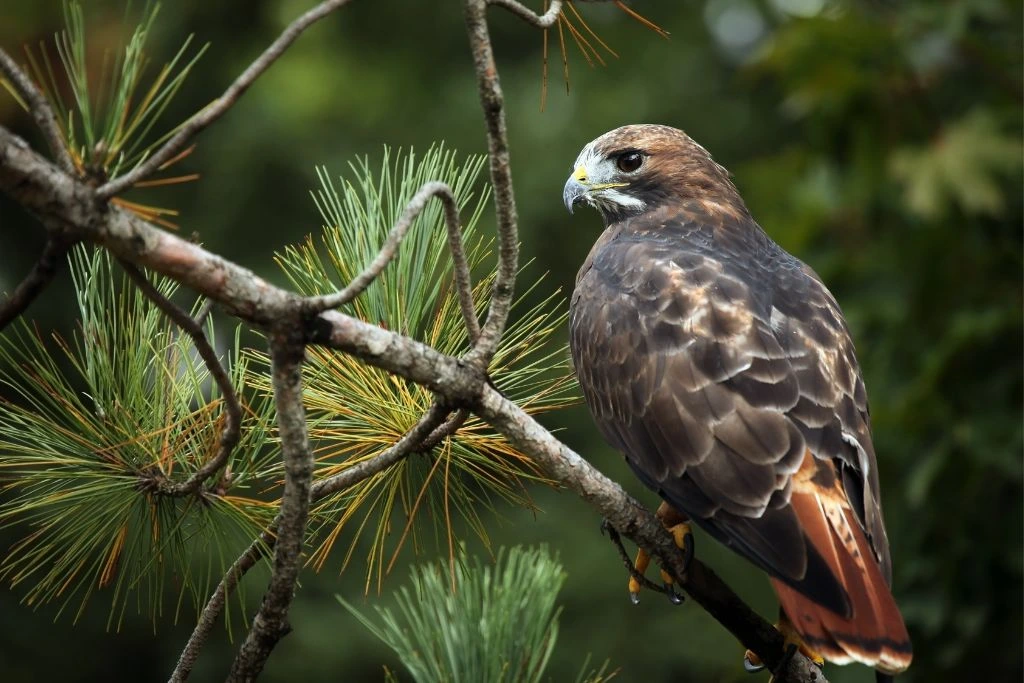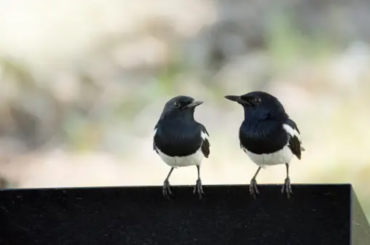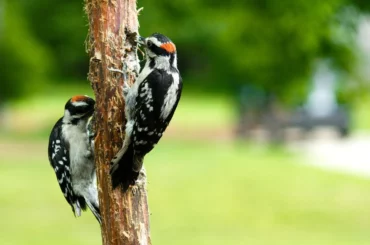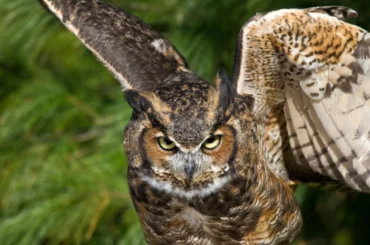Have you ever wondered about the diverse avian life that Ohio has to offer? Did you know that Ohio’s distinct geography, encompassing forested areas and open lands, provides an ideal environment for these raptors, each boasting unique behaviors, hunting tactics, and majestic appearances?
Learn everything from the broad-winged hawk’s mass migration spectacle to the red-tailed hawk’s iconic cry, a staple in Hollywood movies. Read on as we take a flight through Ohio’s skies to explore its vibrant community of hawks.
What Do Hawks Look Like in Ohio?
Taking a glimpse at the hawks soaring high above Ohio’s diverse landscapes, you’ll notice a handful of shared traits that typify these fierce birds of prey. Regardless of being large hawks, their bodies are designed for lethal efficiency. Predominantly, they exhibit broad, rounded wings and a short, wide tail that enable agile maneuvering during high-speed chases.
Most Ohio hawks feature plumages in a mix of brown, white, and gray hues, providing them with excellent camouflage against tree bark and the sky. In addition, Ohio’s hawks are no strangers to various habitats across the state, making their homes in forests, open fields, and even adapting to urban settings. Both large and small hawks in Ohio share these common traits, confirming their status as Ohio’s crucial predators.
1. Red-Tailed Hawk
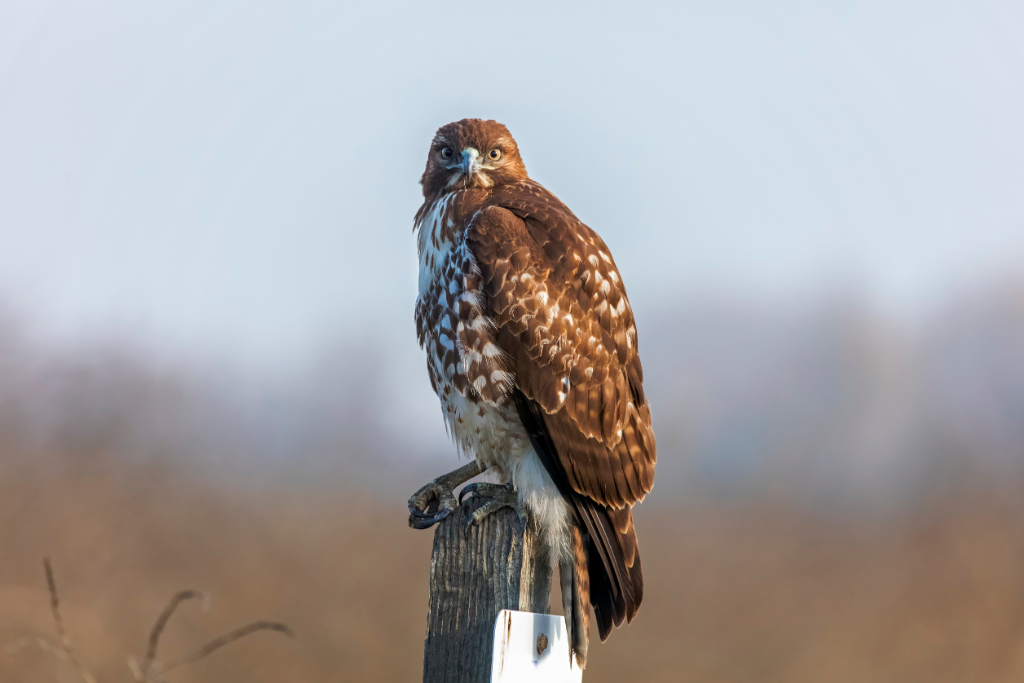
- Kingdom: Animalia
- Phylum: Chordata
- Class: Aves
- Order: Accipitriformes
- Genus: Buteo
- Species: B. jamaicensis
Interestingly, the red-tailed hawk (Buteo jamaicensis) females are about 25% larger than the males. The body coloration varies, yet it typically ranges from light cream to dark brown, with a contrasting belly band of streaked dark colors.
Designed for survival, red-tailed hawks have made significant adaptations. These hawks exhibit keen eyesight, about eight times more powerful than a human’s, enabling them to spot prey from great heights. Their talons are incredibly strong, able to grip prey tightly, while their curved, sharp beaks are efficient for tearing meat.
When it comes to nesting and breeding, the female takes the lead in building the nest, although the male contributes. Perched high in trees or on cliff ledges, their nests are made of sticks and lined with a softer material, like bark strips and green vegetation. After laying one to five eggs, the female primarily incubates them, with the male occasionally filling in and providing food.
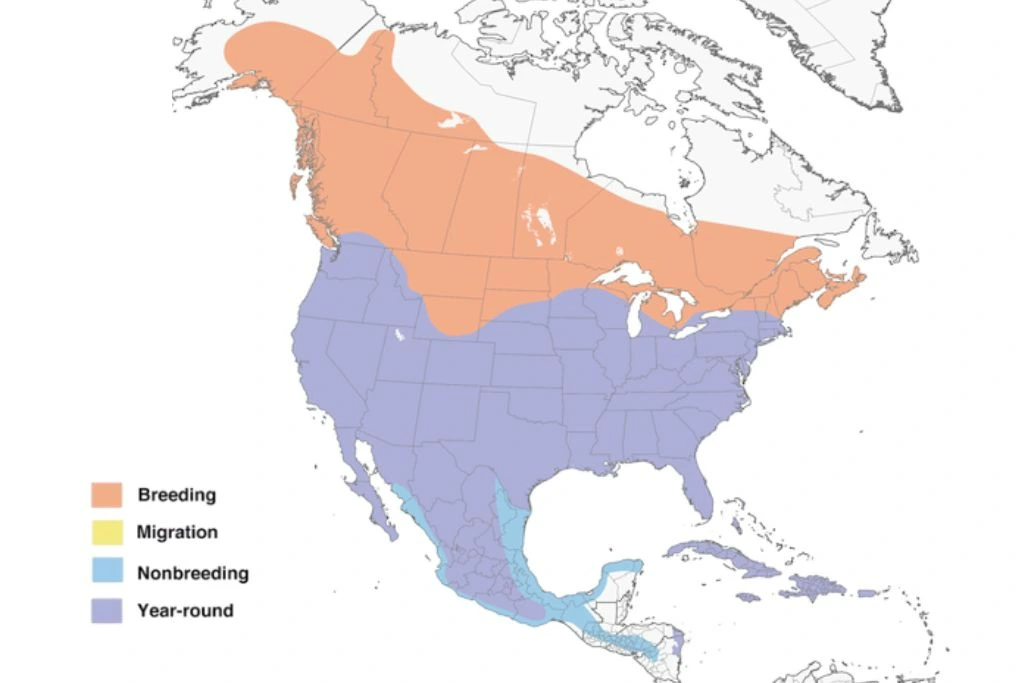
What might surprise you about these large hawks in Ohio is their long lifespan. Their distinctive, hoarse cry is often used in movies to represent any bird of prey. And despite their fierce hunting habits, they play a crucial role in controlling rodent populations. In Ohio, these hawks can be seen soaring in the sky, often around open fields, highways, and woodlands.
2. Cooper’s Hawk
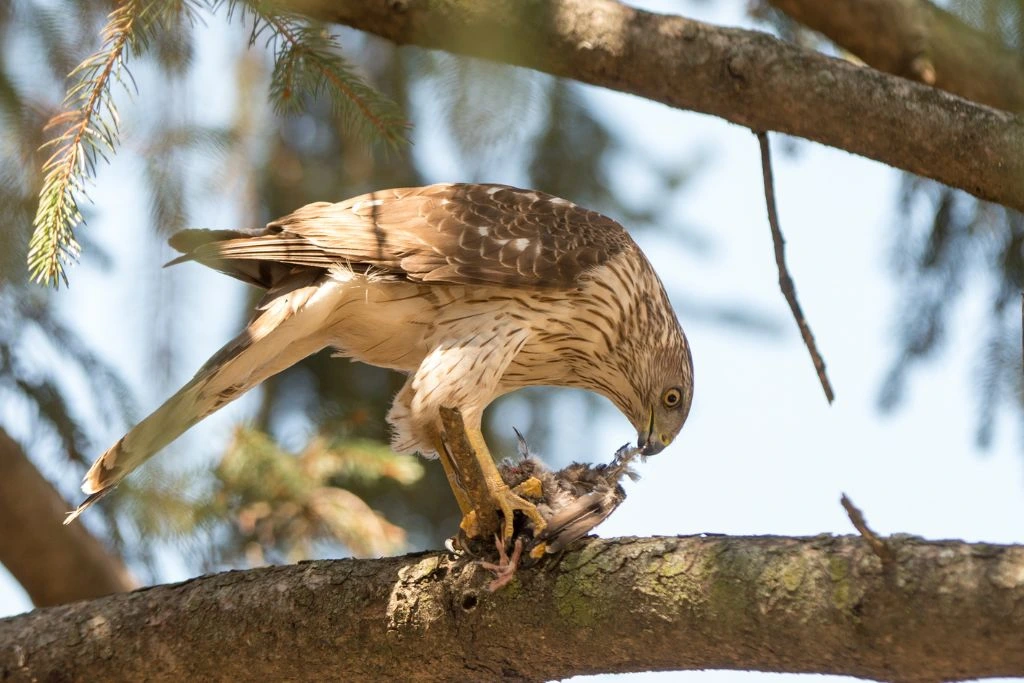
- Kingdom: Animalia
- Phylum: Chordata
- Class: Aves
- Order: Accipitriformes
- Genus: Accipiter
- Species: A. cooperii
Cooper’s hawks (Accipiter cooperii) are medium-sized hawks, often found darting through dense woods in Ohio. Adults are easily recognized by their slate-gray back and wings contrasted with a reddish-barred chest. Younger birds are distinguished by their brownish upper parts and streaked undersides.
Known for their remarkable agility, Cooper’s hawks are adept at chasing down smaller birds, which form the bulk of their diet. These raptors are comfortable in both dense forests and suburban areas, making them a familiar sight in backyards across Ohio. Their short, wide wings and long tails help them maneuver through dense forests while hunting.
Nesting and breeding for Cooper’s hawks follow a typical pattern. The males are the nest’s primary builders, typically situated in trees and made from sticks, bark, and fresh foliage. During this period, the male provides food for the female. The young hawks will fledge or develop feathers necessary for flying in about 6 weeks but will still depend on their parents for another few weeks.
Life expectancy for a Cooper’s hawk in the wild can range up to 12 years, and an interesting fact about these hawks is their rebound from population declines in the mid-20th century, thanks to the banning of the pesticide DDT.
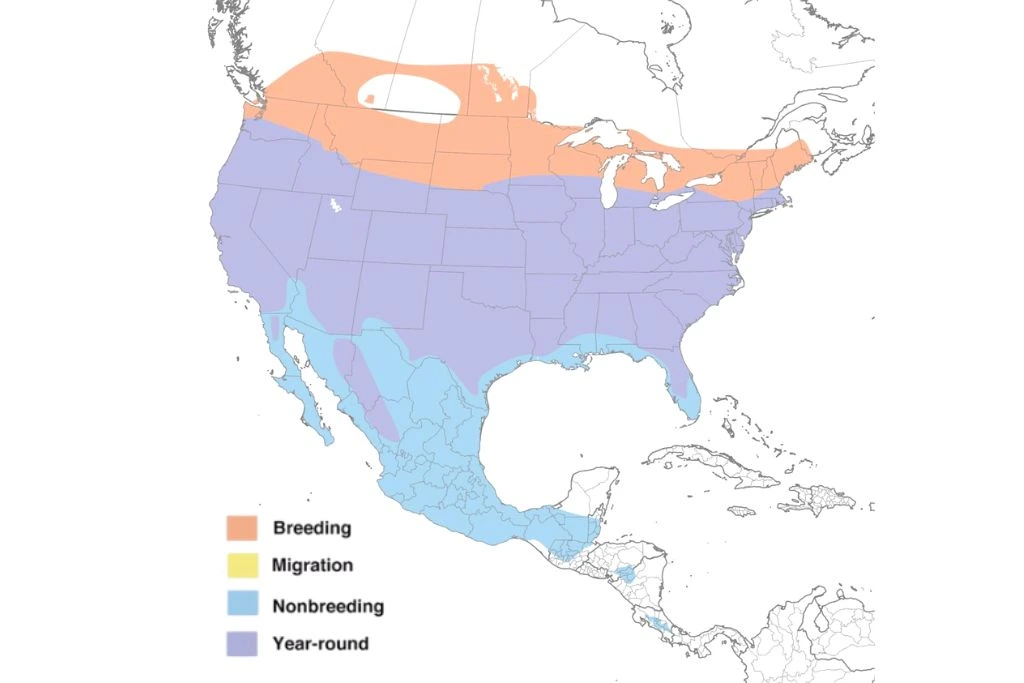
They are now thriving in Ohio, and birdwatchers and enthusiasts in the state can frequently spot them in woodlands and increasingly in urban and suburban areas. Observing the acrobatic hunting displays of these agile Ohio birds of prey is a real treat.
3. Red-Shouldered Hawk
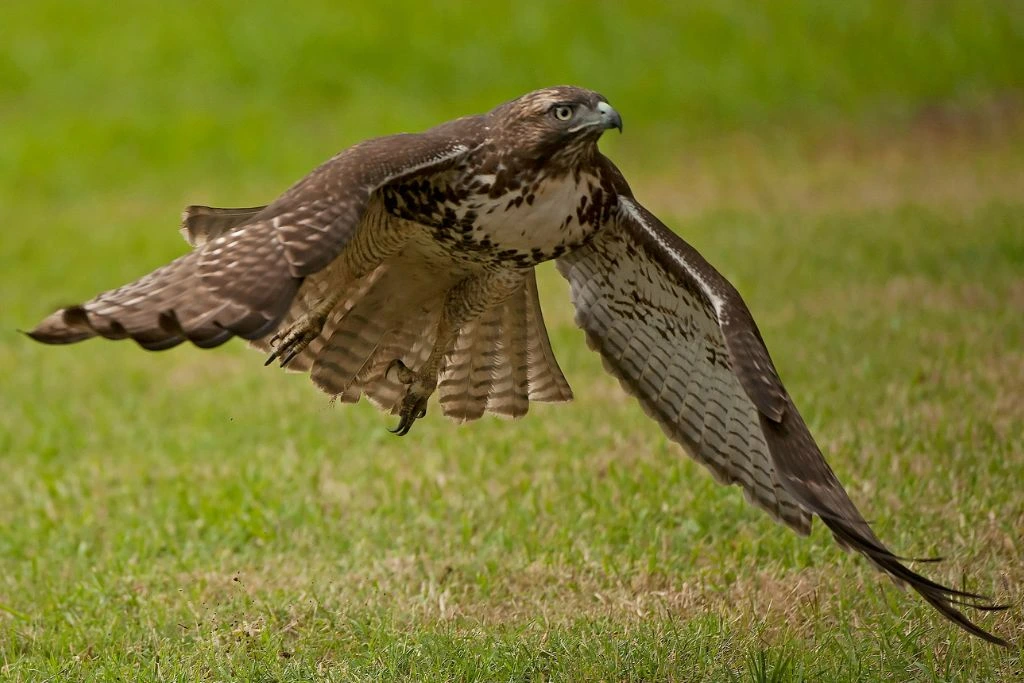
- Kingdom: Animalia
- Phylum: Chordata
- Class: Aves
- Order: Accipitriformes
- Genus: Buteo
- Species: B. lineatus
Known for their uniquely colored “red” shoulders, red-shouldered hawks (Buteo lineatus) stand out among Ohio’s diverse hawk population. These medium-sized raptors have strikingly barred chests and wings of warm, reddish-brown hues. A characteristic attribute that can help identify these birds is the translucent crescents near the wingtips that are visible during flight.
Adept at maneuvering through dense forests, red-shouldered hawks primarily inhabit wooded territories, often near water bodies. Their distinct, repetitive call that sounds like “kee-aah” often gives away their presence even when they’re out of sight.
Red-shouldered hawks’ nesting habits involve both the male and female in constructing the nest, usually in the main crotch of a tall tree. They’re known to return to the same nest year after year, refurbishing them each season. These hawks lay up to 5 eggs, with both parents sharing incubation duties and feeding the hatchlings.
Here’s a fun fact: Red-shouldered hawks have an unusual friendship with crows, birds known for typically harassing hawks. This extraordinary tolerance is attributed to the red-shouldered hawks’ non-threatening behavior toward other birds’ nests.
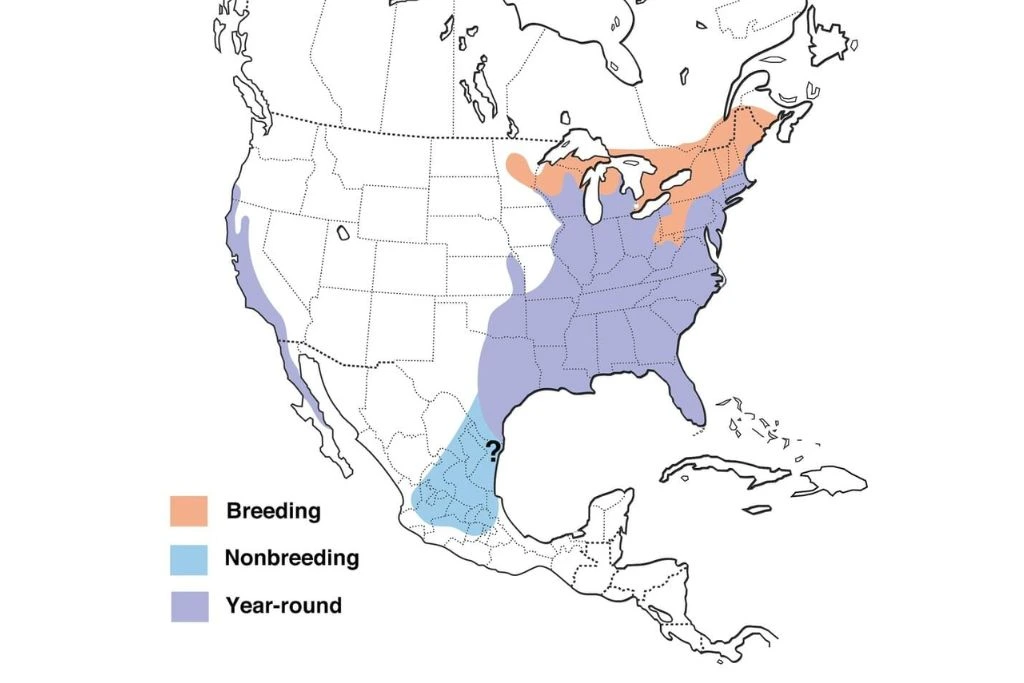
They are frequently spotted in the deciduous forests and wetlands in Ohio, contributing to the state’s vibrant bird-watching scene. They can live up to 20 years in the wild, providing plenty of opportunities for bird enthusiasts to spot these beautiful creatures.
4. Sharp-Shinned Hawk
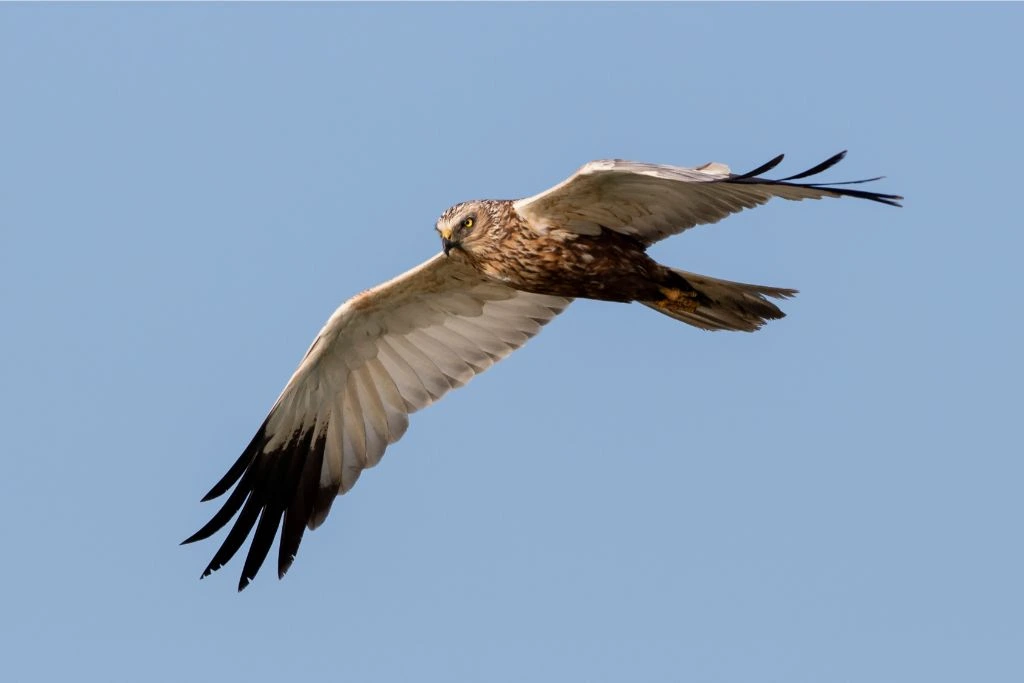
- Kingdom: Animalia
- Phylum: Chordata
- Class: Aves
- Order: Accipitriformes
- Genus: Accipiter
- Species: A. striatus
The smallest hawk in North America, the sharp-shinned hawk (Accipiter striatus), is a frequent sight in Ohio’s skies. Named for their pencil-thin legs, these hawks have slate gray upper bodies and barred reddish underparts. The squared-off tail is a distinct characteristic, helping keen birdwatchers identify them during flight.
Adapted to hunt in dense forests, sharp-shinned hawks are agile and quick. They feed on small birds, catching them mid-air following swift, surprise attacks. Their ability to navigate through thick woodlands demonstrates their superb flying skills, making them fascinating to observe for any bird enthusiast.
During the breeding season, the male woos the female with stunning flight displays, often involving high-speed chases and acrobatic maneuvers. Their nests, built mainly by the males, are placed in dense trees for protection. After laying 4 to 5 eggs, both parents share the duty of incubating and feeding the hatchlings.
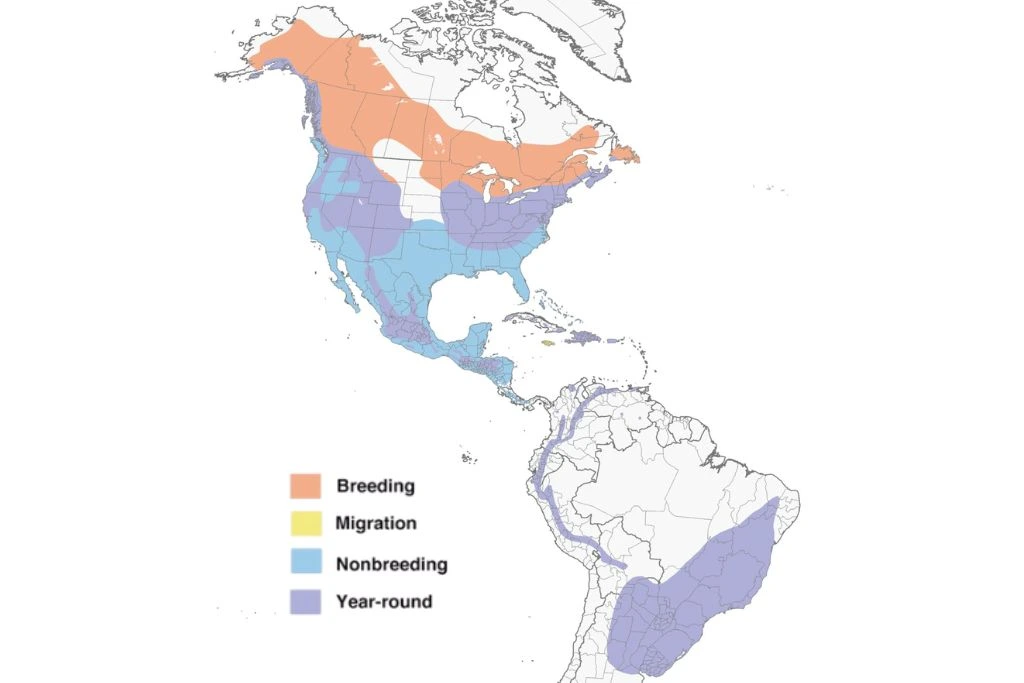
The females are significantly larger than the males, a common trait among birds of prey but notably pronounced in this species. A sharp-shinned hawk in the wild can live up to 7 to 10 years on average. They are a fascinating example of the varied types of hawks found in Ohio, and their fast-paced hunting antics add a unique thrill to the state’s bird-watching experience.
5. Broad-Winged Hawk
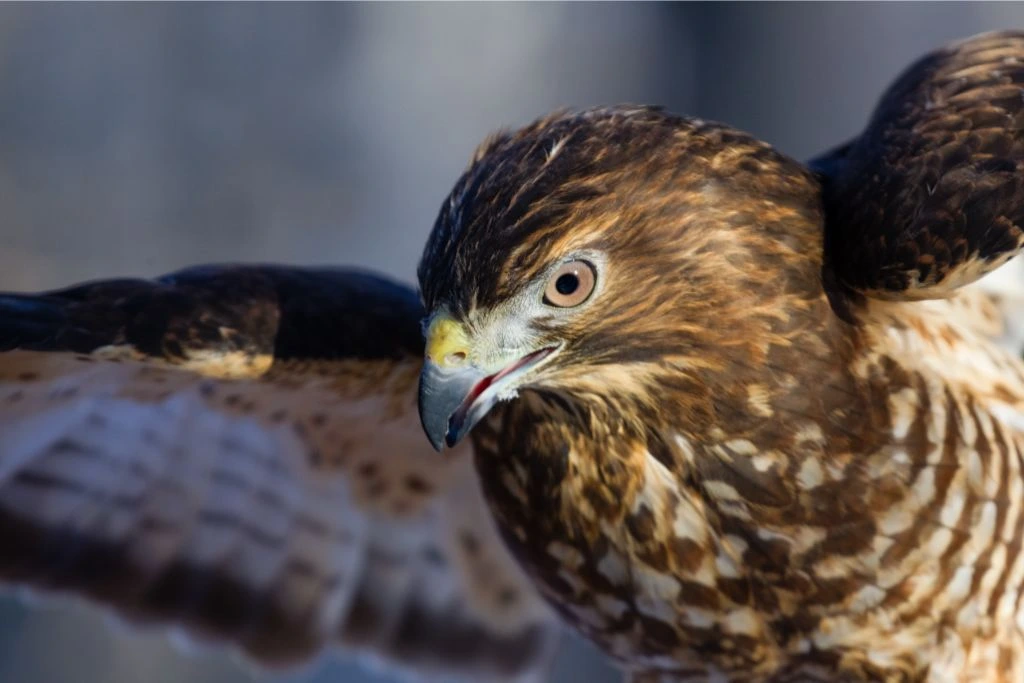
- Kingdom: Animalia
- Phylum: Chordata
- Class: Aves
- Order: Accipitriformes
- Genus: Buteo
- Species: B. platypterus
As their name suggests, broad-winged hawks (Buteo platypterus) have broad wings and short tails, characteristics ideal for long-distance migration. They are relatively small compared to other Buteo hawks, with adults exhibiting a dark brown back and head and a distinctively barred chest and belly. During flight, their broad wings, short tail, and the white band that runs across the tail make them identifiable.
These hawks are primarily forest dwellers and are pretty secretive. Their preferred habitats include deciduous and mixed forests, often near water bodies. Broad-winged hawks feed on various prey, including small mammals, birds, and amphibians, which they catch while soaring or from a perch.
The breeding and nesting habits of these hawks are fascinating. They build their nests high in tall trees, often near the trunk. The female typically lays 1 to 3 eggs, which both parents then incubate. The male primarily takes the responsibility of providing food, while the female tends to the chicks.
Broad-winged hawks’ synchronized migration habits are a sight to behold. Thousands of these hawks can be seen migrating together in spring and fall, creating an impressive spectacle known as a “kettle.” They can live up to 15 years in the wild. As a result, they are commonly seen in Ohio during migration periods, especially in Northeast Ohio, adding an exciting element to the state’s bird-watching activities.
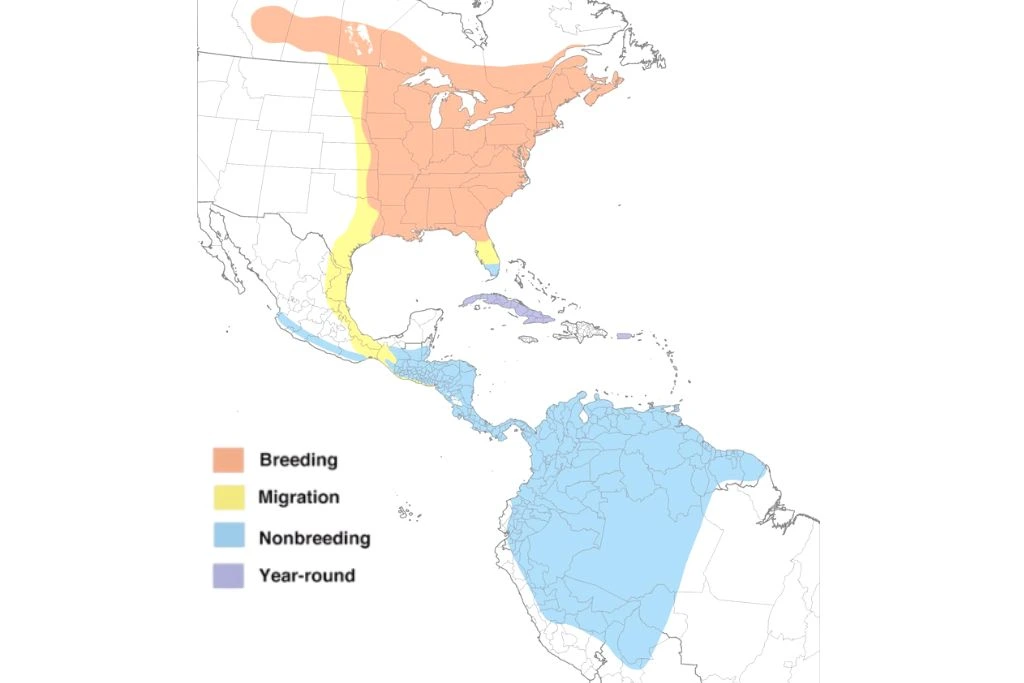
6. Northern Goshawk
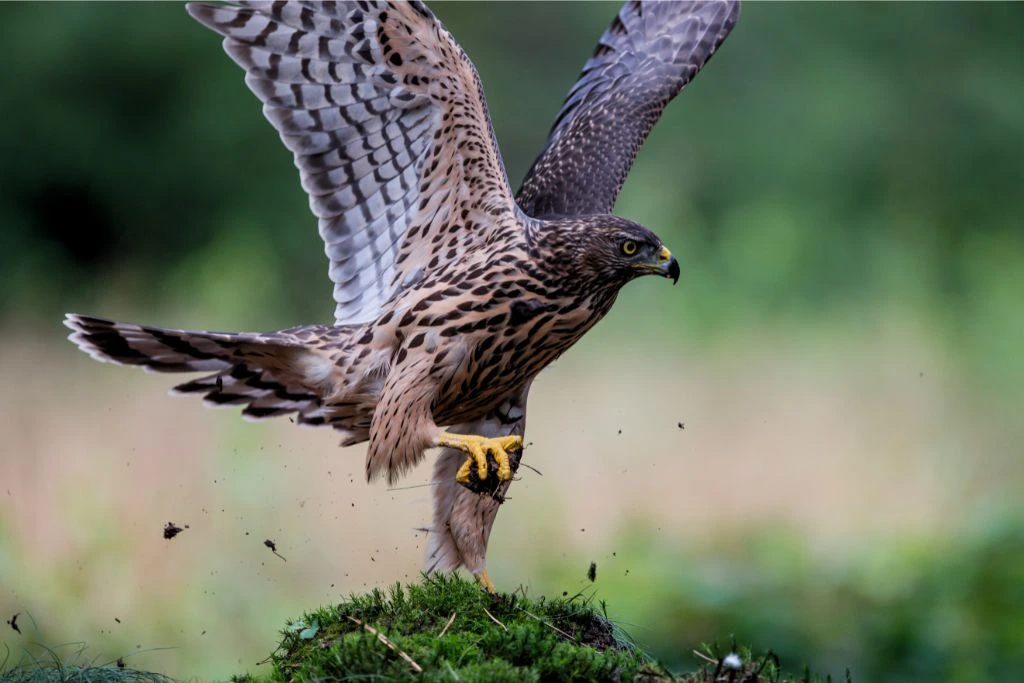
- Kingdom: Animalia
- Phylum: Chordata
- Class: Aves
- Order: Accipitriformes
- Genus: Accipiter
- Species: A. gentilis
Northern goshawks (Accipiter gentilis) are robust and powerful hawks, the largest of the Accipiter genus, known for their intense hunting prowess and striking appearance. They have blue-gray plumage on their back and wings, with a finely barred underbelly and distinctive white eyebrows, making them a sight to behold.
These hawks are most commonly found in large, mature forests where they can utilize their mighty wings and long tails to chase after prey. They mainly feed on other birds and small mammals, exhibiting breathtaking speed and agility during their hunts.
Northern goshawks are highly territorial, especially during the breeding season. Both males and females take part in building a large nest in a tree, usually near the trunk, for better security. The female lays 2 to 4 eggs, and both parents share incubation and chick-rearing responsibilities.
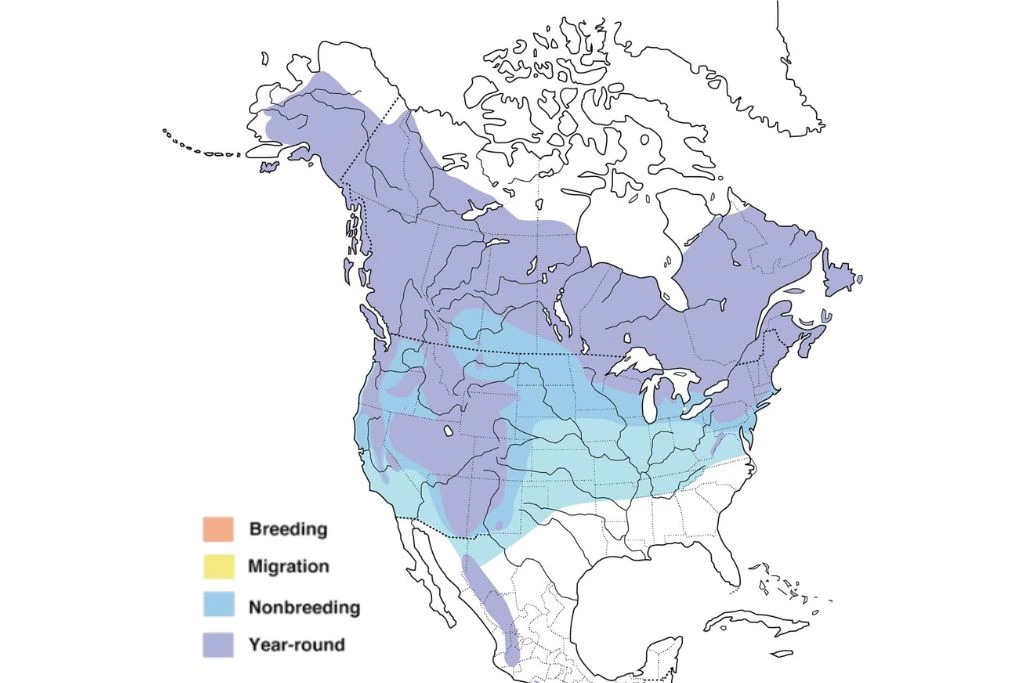
Northern goshawks’ call is a loud, rapid-fire “ki-ki-ki-ki-ki,” often heard during courtship or when their territory is invaded. The northern goshawk can live up to 20 years in the wild, and while not as commonly sighted in Ohio as some other hawks, their impressive size and power make any encounter with them a truly memorable event for Ohio birdwatchers.
7. Rough-Legged Hawk
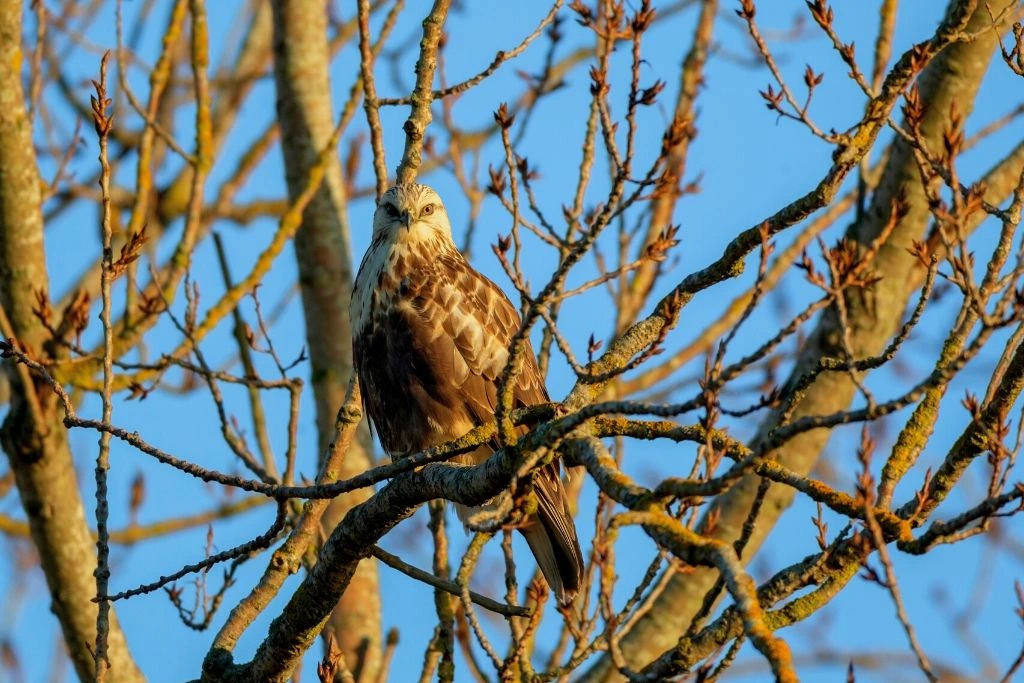
- Kingdom: Animalia
- Phylum: Chordata
- Class: Aves
- Order: Accipitriformes
- Genus: Buteo
- Species: B. lagopus
Familiarizing yourself with the rough-legged hawk (Buteo lagopus) promises a fascinating dive into the world of these great raptors. Their name originates from the feathering that extends down their legs to their talons, a feature unique among American hawks, an adaptation to their Arctic breeding grounds.
With a preference for open lands and fields, these hawks seek habitats that allow them to spot and swoop down on their prey from above. Their diet primarily consists of small mammals, like voles and lemmings, and they’re known for their hovering hunting technique, making them an exciting sight for bird enthusiasts.
Breeding and nesting for the rough-legged hawk often occur in cliff faces or outcrops in the tundra regions, but during their winter migration, Ohio becomes a welcoming abode.
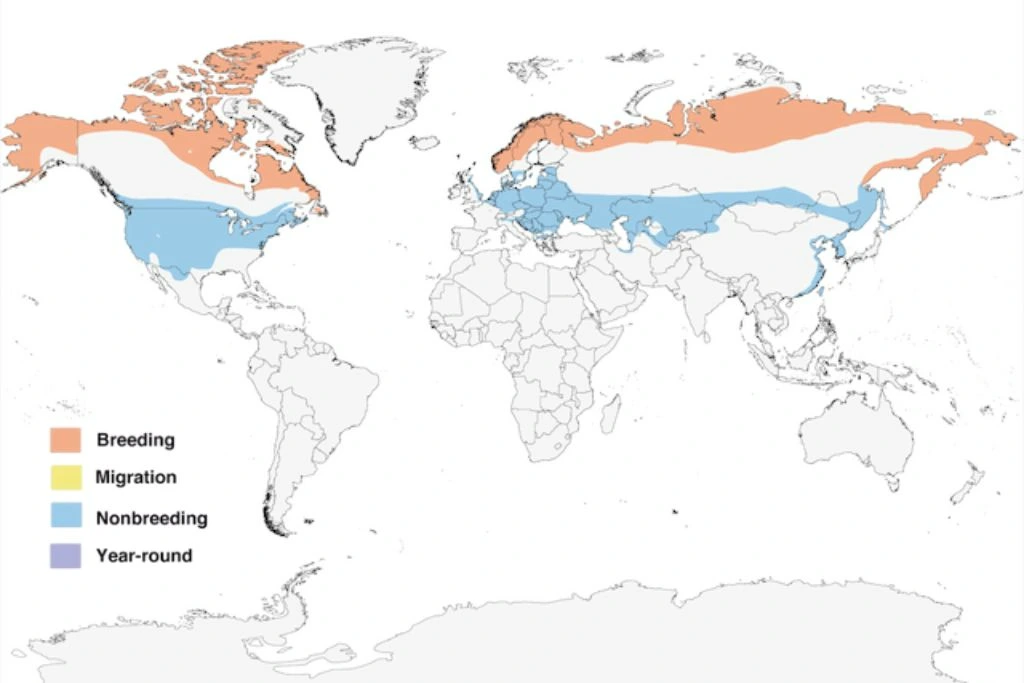
A notable feature of these hawks is their variable plumage. They exhibit light and dark morphs, both adorned with a “belly band” – a dark patch at their belly. Though sightings of the rough-legged hawk are more frequent in Ohio during winter, their aerial hunting displays make them worth the wait for avid bird watchers.
FAQs
Are There Specific Areas in Ohio Where I’m More Likely to Spot Hawks?
Yes, certain areas in Ohio offer more frequent hawk sightings. For instance, the state’s northeast region is particularly known for sightings during migration periods, such as for the broad-winged hawk. However, hawks can be found across Ohio in various habitats, ranging from dense forests to open fields and even urban areas.
Can Hawks in Ohio Be Seen Year-Round?
Many species of hawks reside in Ohio year-round, such as the red-tailed hawk and Cooper’s hawk. Others, like the broad-winged hawk, are primarily seen during migration periods in the spring and fall. The rough-legged hawk, a bird of the Arctic during the breeding season, visits Ohio during the winter months.
Are Hawks in Ohio Protected By Law?
Yes, all hawks in Ohio are protected under the Migratory Bird Treaty Act. Without a valid permit, it is illegal to kill, sell, buy, or possess any part of a live or dead hawk. The law is enforced to protect these magnificent raptors and ensure their continued presence in the state’s diverse ecosystems.

